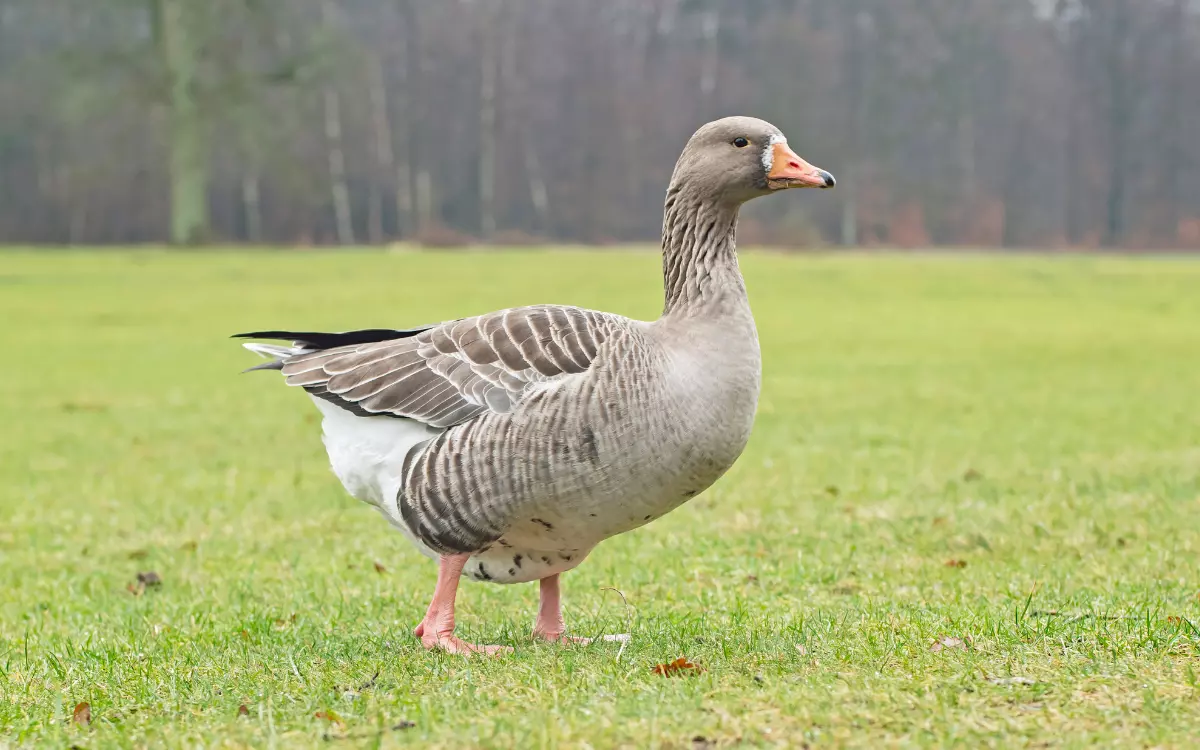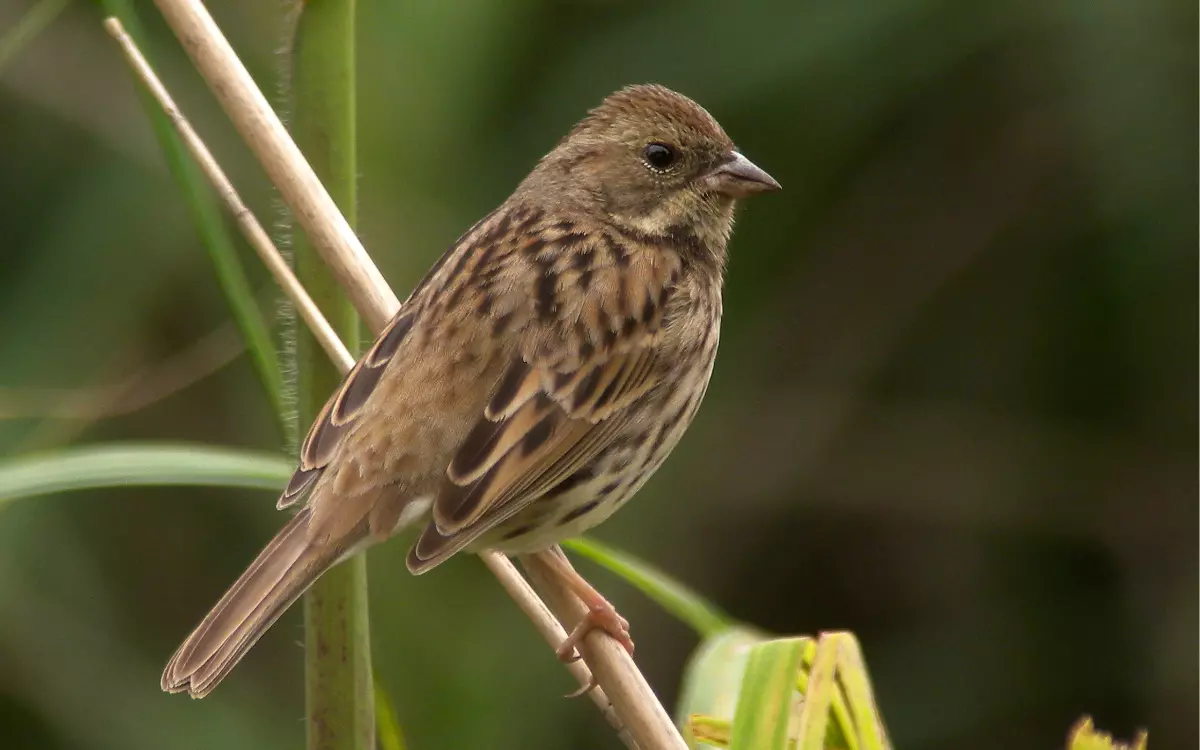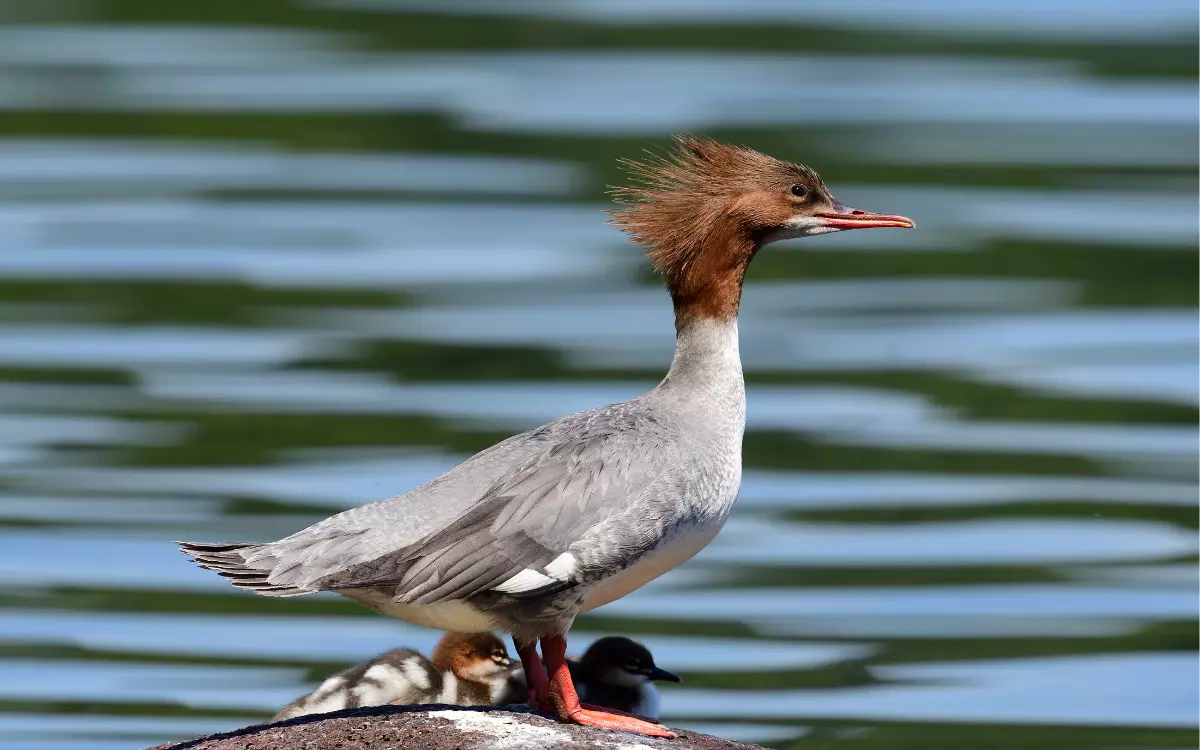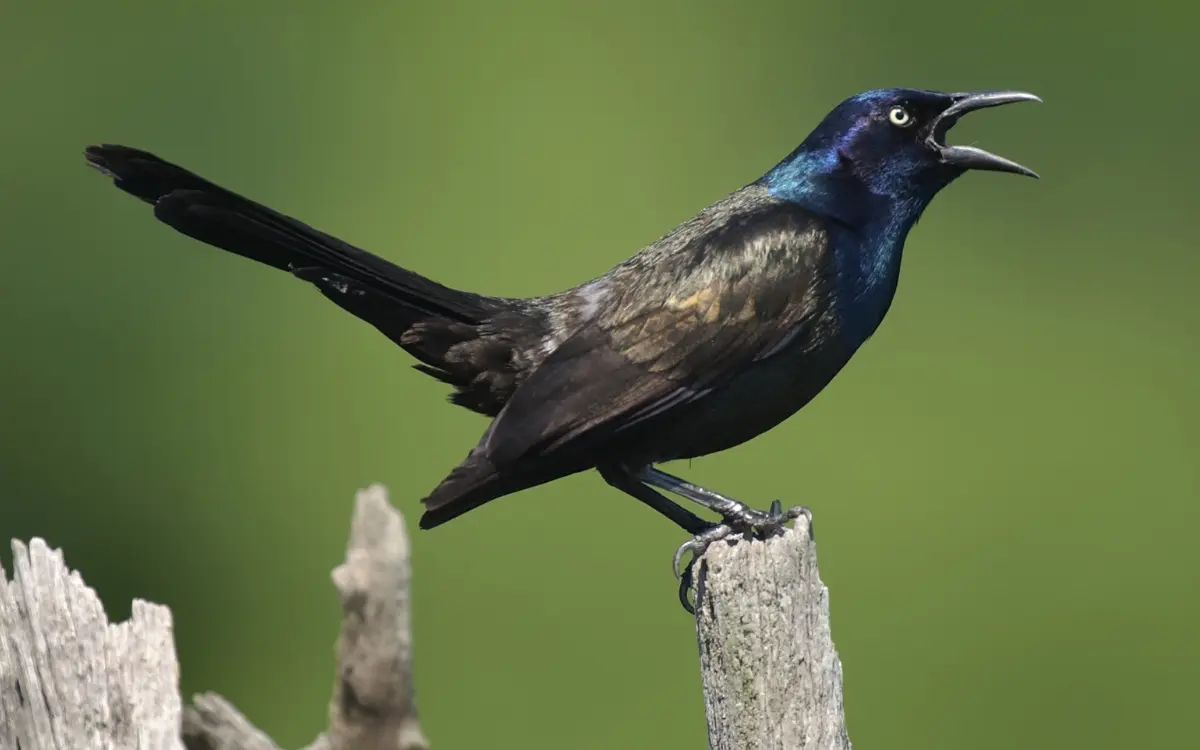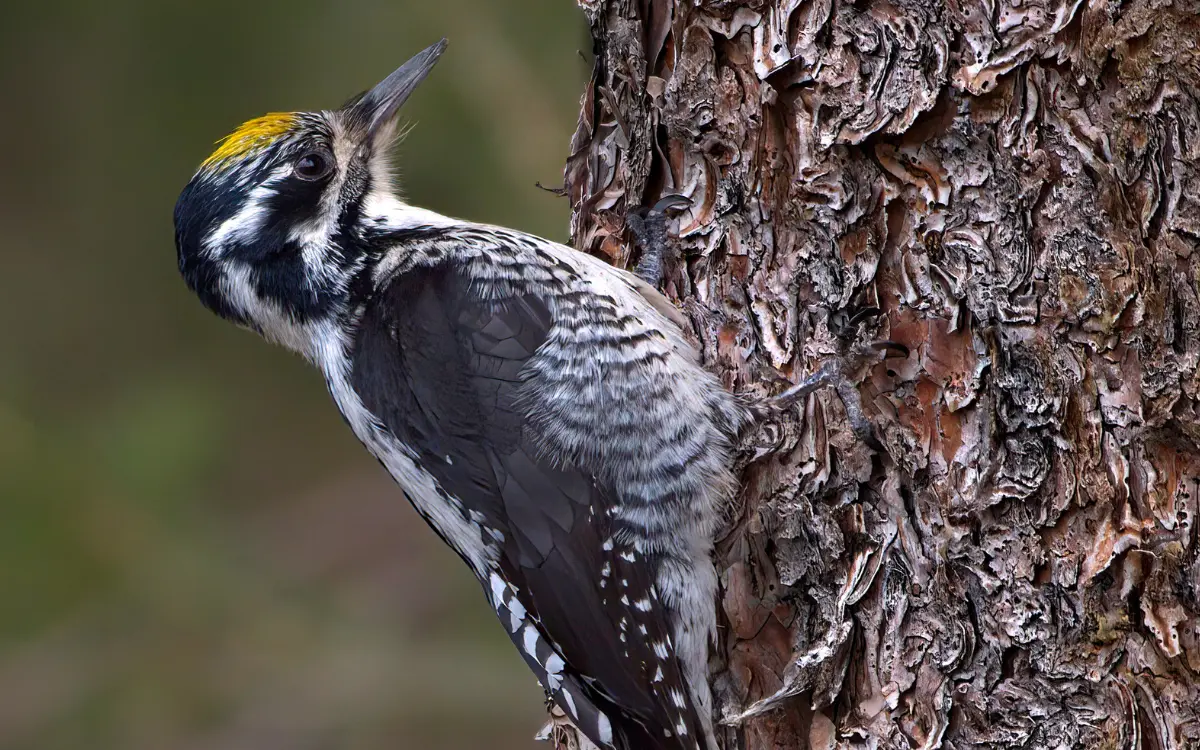9 Most Cutest Tiny Birds In Florida
Florida is a dreamworld for Tiny birds lovers! It’s a place where many different kinds of birds fly, sing, and play.
Tiny birds, from colorful warblers to chirpy sparrows, are most important. They keep bugs in check and help plants grow by spreading seeds. These small birds add beauty and life to Florida’s amazing natural world.
9 Most Cutest Tiny Birds In Florida
1. Carolina Wren:
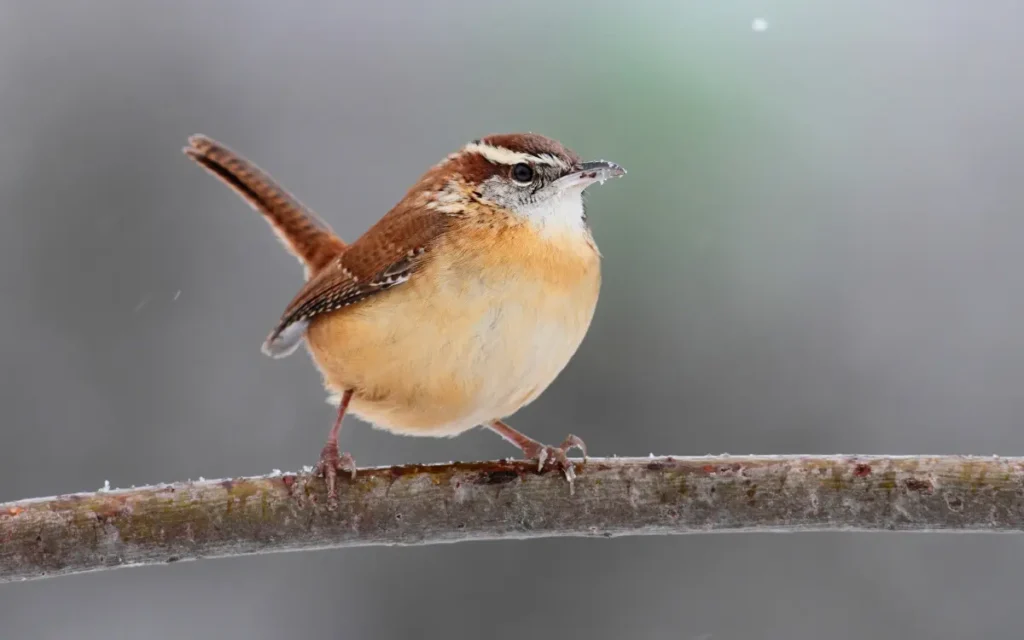
The Carolina Wren is a charming little bird, easily recognized by its warm brown feathers and distinctive white stripe above the eye. It’s about the size of a sparrow, with a plump body and a tail that often sticks up. These birds have a slightly curved beak, perfect for their favorite activity: foraging for food.
These wrens prefer living in wooded areas, gardens, and even our backyards. They love places with dense bushes and thickets, providing them with great spots for hiding and nesting. You’ll mainly find them in the southeastern parts of the United States.
When it comes to food, Carolina Wrens are not very fussy. They mainly feed on insects like spiders, caterpillars, and beetles. Occasionally, they enjoy small fruits and seeds. Their curious nature drives them to explore under leaves and in hidden corners for tasty treats. These small, energetic birds are a delightful sight in any natural setting!
- Length: 4.9-5.5 in (12.5-14 cm)
- Weight: 0.63-0.81 oz (18-23 g)
- Wingspan: 11 in (29 cm)
Read also: 21 Types of Wren Birds
2. Red-Winged Blackbird :
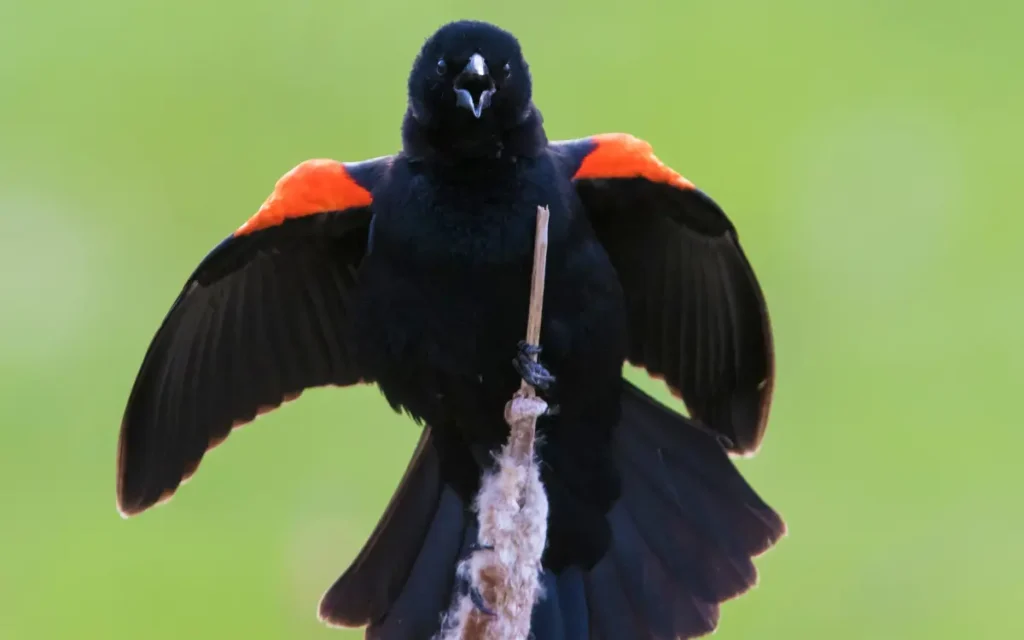
The Red-Winged Blackbird is a striking bird known for its shiny black feathers and bright red and yellow shoulder patches.
These medium-sized birds are found in wetlands, marshes, and open fields across North America. They adapt well to different environments, even visiting bird feeders in backyards.
Red-winged blackbirds eat mainly insects, seeds, and grains. During summer, they feast on insects like flies, and in winter, they switch to seeds and grains.
These birds are famous for their loud calls and are often seen perched on reeds or fence posts. Their vibrant colors and adaptable nature make them a fascinating species to observe.
- Length:6.7-9.1 in (17-23 cm)
- Weight: 1.1-2.7 oz (32-77 g)
- Wingspan: 12.2-15.8 in (31-40 cm)
3.Great Crested Flycatcher:
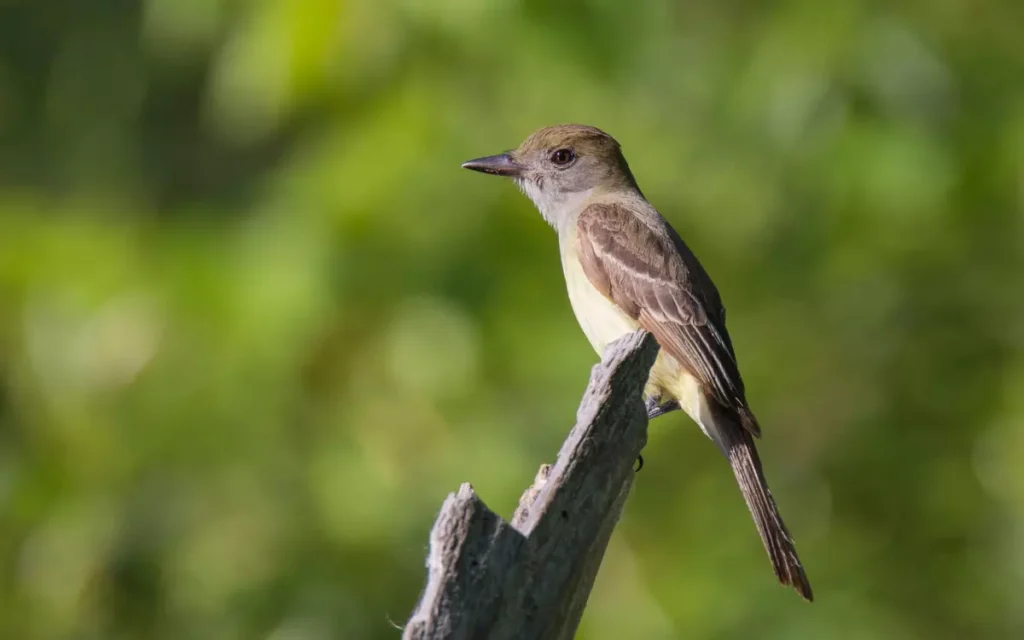
The Great Crested Flycatcher is a colorful bird with lemon-yellow belly and rusty brown wings. It’s a bit larger than a robin and has a long tail. These birds live in woodlands and forests, often near clearings. You can also find them in parks and large gardens.
They love to eat insects like beetles, butterflies, and moths. Sometimes, they’ll eat fruits too. Great Crested Flycatchers are known for their loud calls and are often heard before they’re seen.
They catch insects in mid-air, showing off their excellent flying skills. This beautiful bird adds a splash of color and liveliness to the woods!
- Length: 6.7-8.3 in (17-21 cm)
- Weight: 0.9-1.4 oz (27-40 g)
- Wingspan: Approximately 13.5 to 15 inches
4.Gray Catbird:
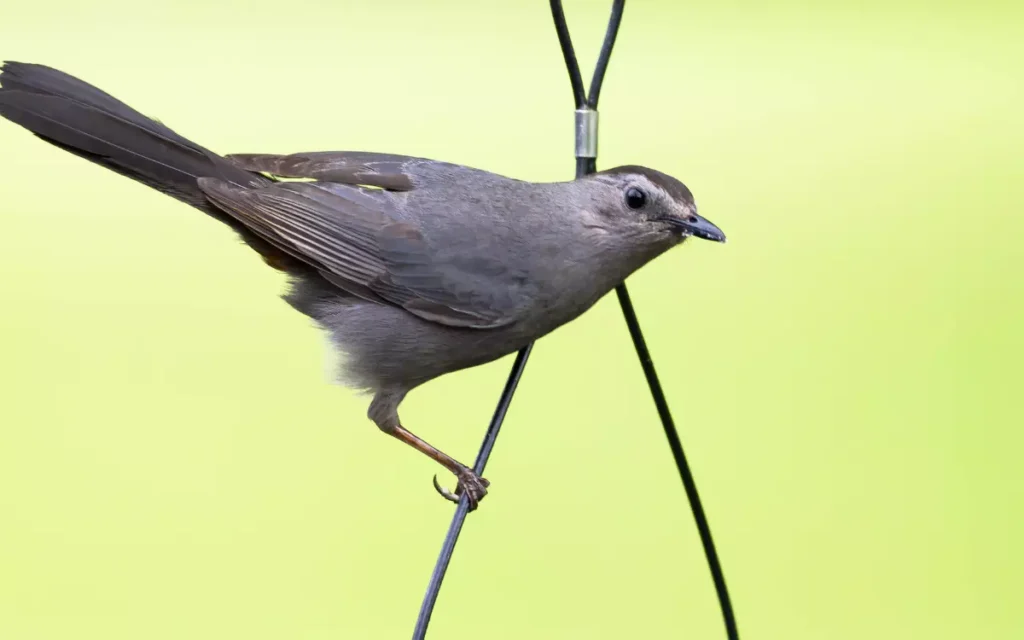
The Gray Catbird is a medium-sized bird with sleek, gray feathers and a black cap on its head. Its most distinct feature is the reddish patch under its tail. These birds are often found in thickets, gardens, and shrubbery areas across North America.
Gray Catbirds are famous for their cat-like calls, which is how they got their name. They eat a variety of foods, including insects, berries, and fruits.
In their search for food, they’re known to be quite curious and playful. The Gray Catbird’s unique call and love for dense foliage make it a delightful bird to encounter in nature.
- Length: 8.3-9.4 in (21-24 cm)
- Weight: 0.8-2.0 oz (23.2-56.5 g)
- Wingspan: 8.7-11.8 in (22-30 cm)
Read also:
- 10 Finches in Florida with Photo
- 9 blackbirds in Florida: That attracts you eyes
- 11 Types of Red Birds in Florida
- 11 Types species of Geese In Florida: (ID &Images)
5.Tufted Titmouse:
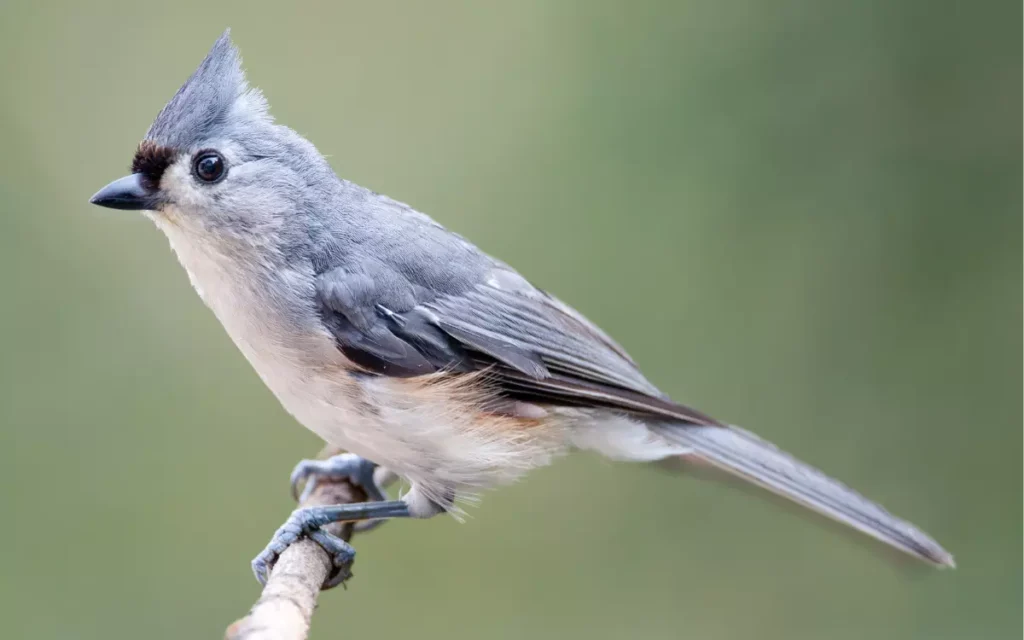
The Tufted Titmouse is a small bird with soft gray feathers, a white belly, and a cute tuft on its head. It’s about the size of a chickadee. These birds are found in forests, gardens, and parks, mainly in the eastern United States.
They love areas with lots of trees and shrubs.
The Tufted Titmouse eats mainly insects, like caterpillars and beetles, but also enjoys seeds and nuts. In winter, they visit bird feeders for sunflower seeds. They’re known for their cheerful song and playful behavior. The Tufted Titmouse is a joyful addition to any backyard or forest setting!
- Length: 5.5-6.3 in (14-16 cm)
- Weight: 0.6-0.9 oz (18-26 g)
- Wingspan: 7.9-10.2 in (20-26 cm)
6. Northern Parula:
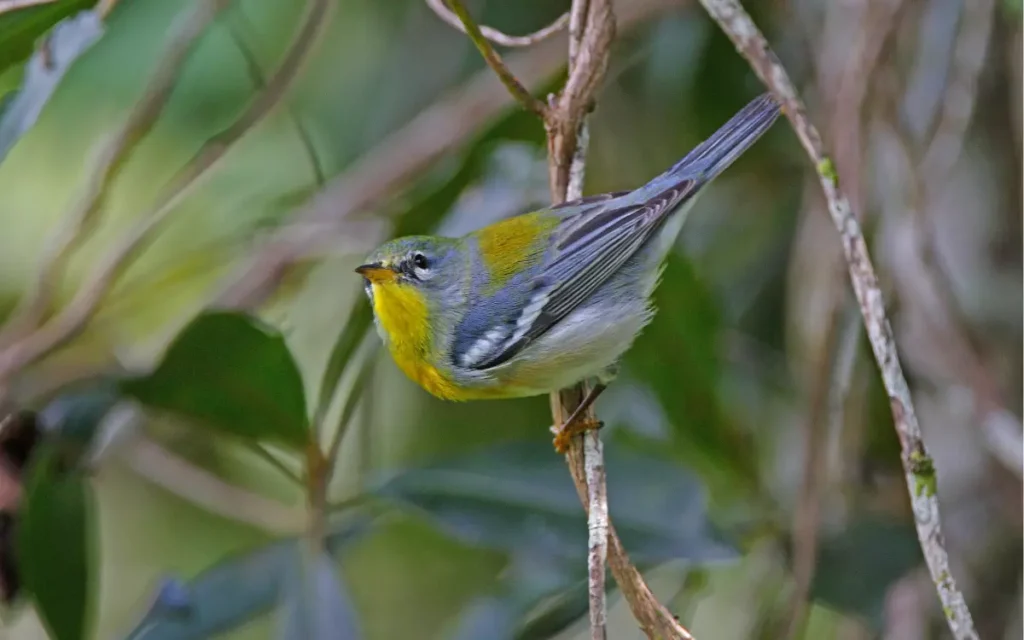
The Northern Parula is a tiny warbler with a blue-gray back, a bright yellow throat, and an eye-catching orange band across its chest. It’s smaller than a sparrow.
These birds thrive in moist woodlands, especially near streams and rivers, across eastern North America. They’re also seen in parks and forest edges.
Northern Parulas feed on small insects and spiders, which they skillfully pick from tree leaves and branches. During migration, they might eat some berries too. Known for their distinctive, buzzy trill, these warblers add a splash of color and lively music to their habitats.
- Length:4.3-4.7 in (11-12 cm)
- Weight: 0.2-0.4 oz (5-11 g
- Wingspan: 6.3-7.1 in (16-18 cm)
7.Tree Swallow:
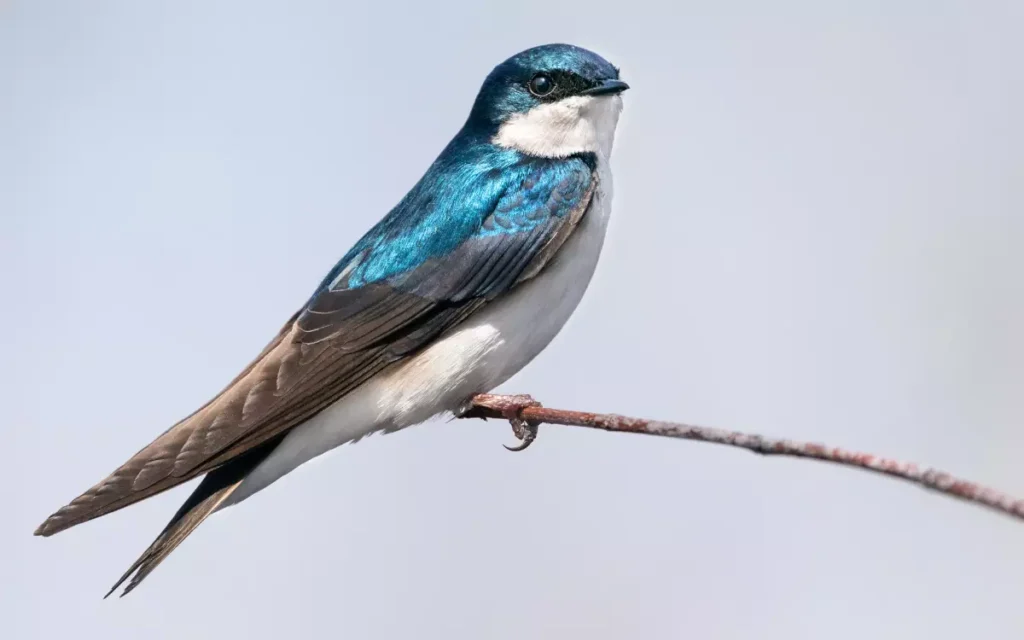
The Tree Swallow is a sleek bird with iridescent blue-green upperparts and a clean white underbelly. It’s a bit larger than a sparrow. These birds are often found near water bodies like lakes and rivers, as well as in open fields across North America. They nest in tree cavities or birdhouses.
Tree Swallows are exceptional flyers, catching insects mid-air with remarkable agility. They primarily eat flying insects but will also consume berries and seeds, especially in colder months. Known for their swift, graceful flight and social nature, Tree Swallows are a captivating sight in their natural environment.
- Length:4.7-5.9 in (12-15 cm)
- Weight: 0.6-0.9 oz (16-25 g)
- Wingspan: 11.8-13.8 in (30-35 cm)
8.White-eyed Vireo:
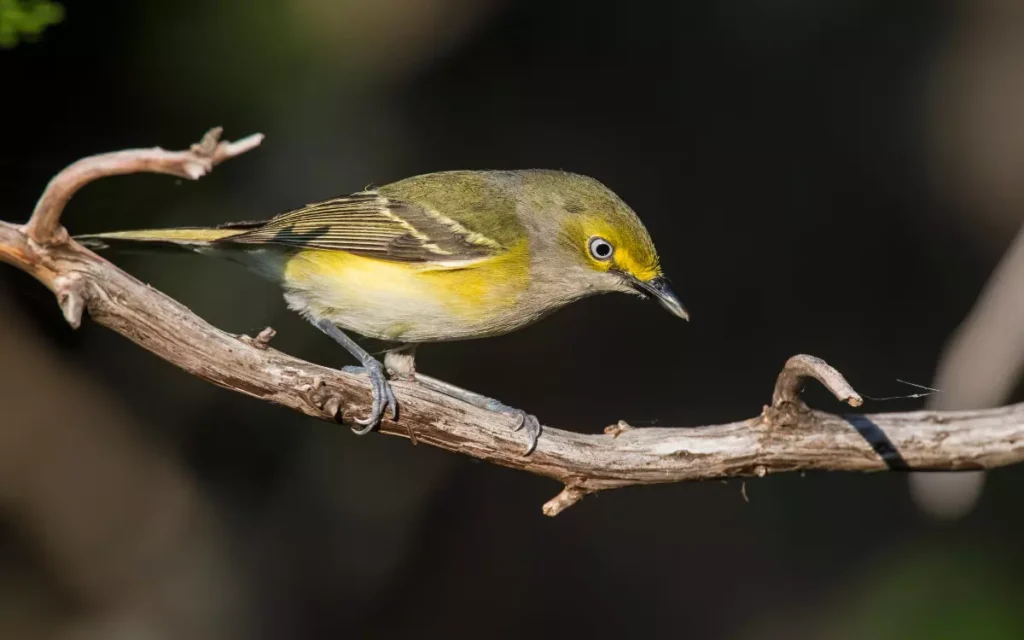
The White-eyed Vireo is a small, sturdy bird with olive-green upperparts and white underparts. Its most striking feature is its bright white eyes. These birds prefer dense shrubbery in woodlands, often near wetlands, in the southeastern United States.
They are masters at staying hidden in thick vegetation. White-eyed Vireos primarily eat insects like caterpillars and beetles, which they find among leaves and branches. They also enjoy eating berries and small fruits.
Known for their loud and distinctive song, these birds are more often heard than seen. The White-eyed Vireo is a delightful, secretive bird with a unique appearance and sound.
- Length:4.3-5.1 in (11-13 cm)
- Weight: 0.3-0.5 oz (10-14 g)
- Wingspan: 6.7 in (17 cm)
9.Black-and-white Warbler:
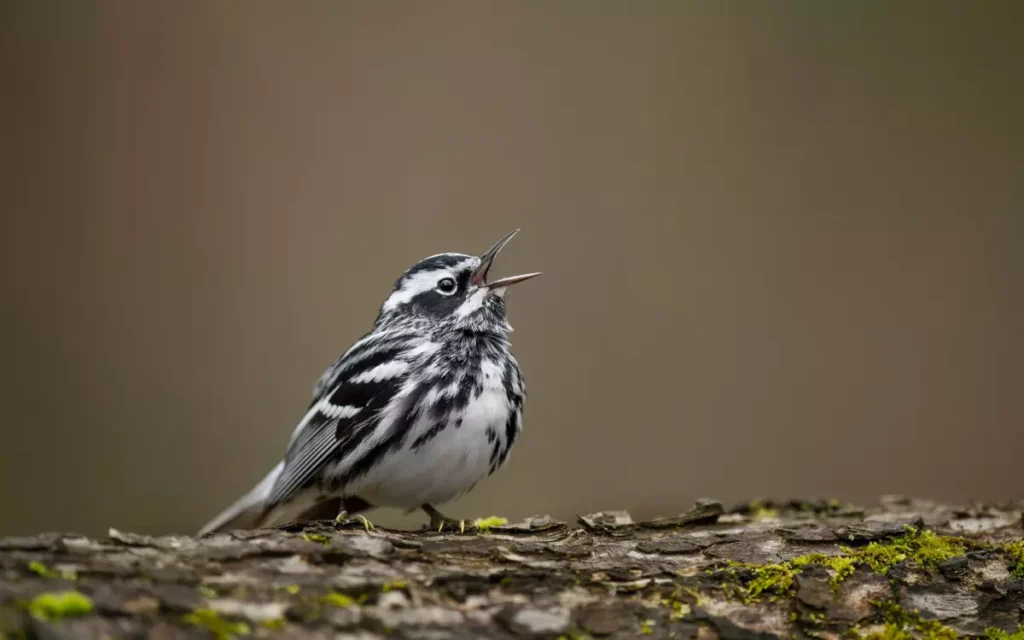
The Black-and-white Warbler is a small bird with a striking pattern of black and white stripes all over its body. It’s about the size of a sparrow. These warblers are found in forests and woodlands across North America, especially where there are lots of trees.
They have a unique way of moving up and down tree trunks and branches, similar to woodpeckers. Black-and-white Warblers mainly eat insects like caterpillars and spiders, picking them from tree bark and leaves. Their distinctive, high-pitched song often echoes through the forest. These warblers are known for their bold striped pattern and tree-climbing habits.
- Length:4.3-5.1 in (11-13 cm)
- Weight: 0.3-0.5 oz (8-15 g)
- Wingspan: 7.1-8.7 in (18-22 cm)
Bird Watching and Feeding in Florida
Florida is a paradise for bird lovers! With its warm climate and diverse habitats, it’s home to many beautiful birds. Bird feeders and suet feeders play a big role in attracting tiny birds like warblers, finches, and wrens. These feeders provide birds with extra food, especially in winter when insects and fruits are less available.
In your backyard, adding a bird feeder or suet feeder can turn it into a mini bird sanctuary. You’ll see different kinds of small birds coming to eat.
For those who love exploring, Florida has many popular parks and nature reserves for bird watching.
Places like the Everglades National Park, Merritt Island National Wildlife Refuge, and Corkscrew Swamp Sanctuary are fantastic for seeing a variety of birds in their natural habitats. These spots are especially great for seeing rare and migratory birds.
So, whether you’re setting up a feeder at home or venturing into the wild, Florida offers endless opportunities to enjoy and learn about birds!
Impact of Introduced Species: European Starling in Florida
The European Starling, introduced in America in the late 1800s, has had a big impact, especially in Florida. These birds are about the size of a blackbird, with shiny, dark feathers. They’re not native to Florida but have become very common.
Starlings often compete with native birds for food and nesting places. They eat lots of insects, fruits, and seeds, which can reduce food for local birds. They also like to nest in holes in trees, which can make it hard for native birds to find homes.
The presence of European Starlings in Florida shows how introduced species can affect local wildlife and ecosystems. It’s important to understand these impacts to protect our native birds and habitats.
Conservation Efforts for Florida’s Tiny Birds
Tiny birds in Florida face challenges like loss of habitat, climate change, and competition from non-native species. These issues make it hard for them to find food and safe places to live and raise their young.
Local conservation programs are working hard to help. They create protected areas where birds can live safely, and they plant native plants to provide natural food and shelter. These programs also educate people about how to protect birds, like keeping cats indoors and not using harmful chemicals in gardens.
By working together, we can make sure these tiny, beautiful birds have a safe place to call home in Florida.
Enjoying Florida’s Tiny Birds
Backyard bird watching in Florida is a fun way to see tiny birds up close. To start, set up bird feeders and a water bath in your backyard. Use different types of seeds to attract a variety of birds. Remember to stay quiet and patient while watching.
You can also be a part of citizen science projects. These projects let you help scientists by counting the birds you see and sharing your observations. This is a great way to learn about birds and help protect them. By joining these projects, you become a bird detective, contributing to real scientific research!
FAQs:
Q: What is the small sparrow like bird in Florida?
A: The small sparrow-like bird in Florida could be a House Sparrow or a Chipping Sparrow, both common in the area.
Q:Which birds are very small?
A:Very small birds include hummingbirds, warblers, and kinglets, known for their diminutive size.
Q: What is the tiny gray and white bird in Florida?
A: The tiny gray and white bird in Florida might be a Tufted Titmouse, recognized by its gray upper parts and white belly.
Q:What are the small blue birds in Florida?
A:Small blue birds in Florida include the Eastern Bluebird and the Indigo Bunting, both known for their vibrant blue colors.
Q:What is the small bird that looks like a swallow?
A:The small bird that resembles a swallow in Florida could be the Purple Martin, known for its similar shape and flight patterns.
Conclusion:
Preserving Florida’s tiny bird species is key for keeping nature balanced and diverse. These birds help control insects and spread seeds, which is good for plants and other animals. Saving their habitats also helps other wildlife. By protecting these small but important birds, we make sure Florida’s nature stays healthy and full of different kinds of life.

